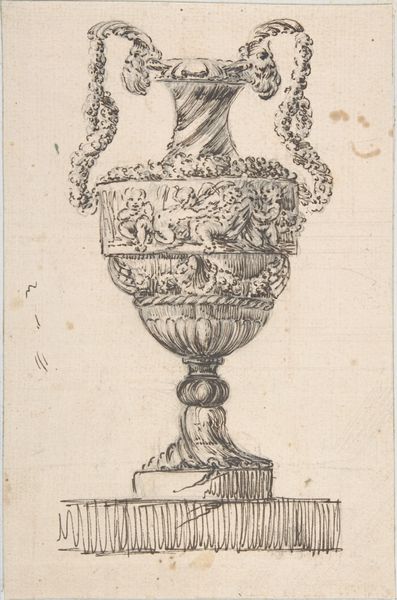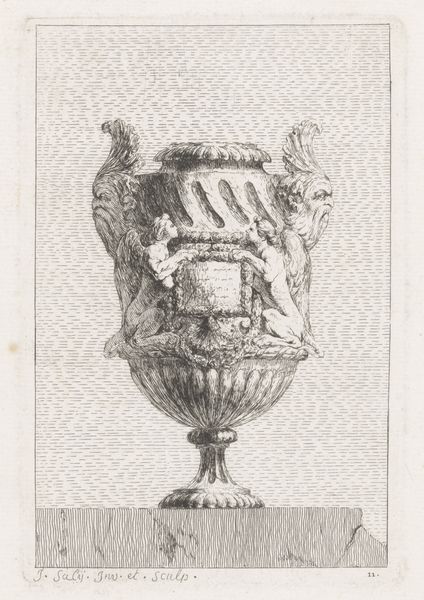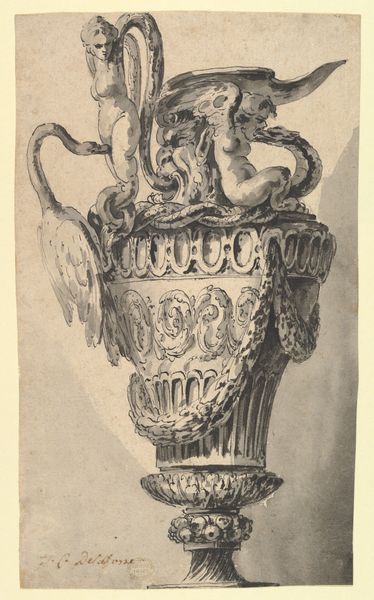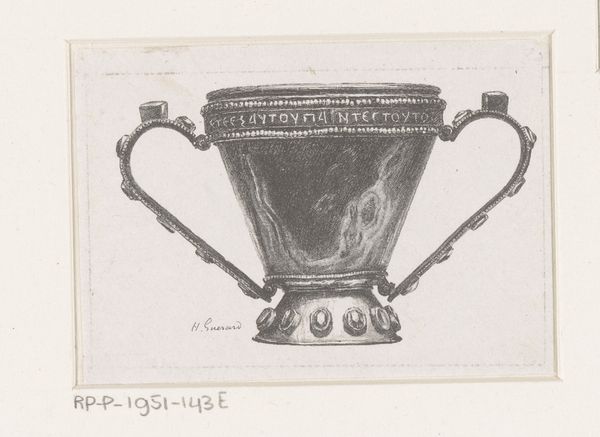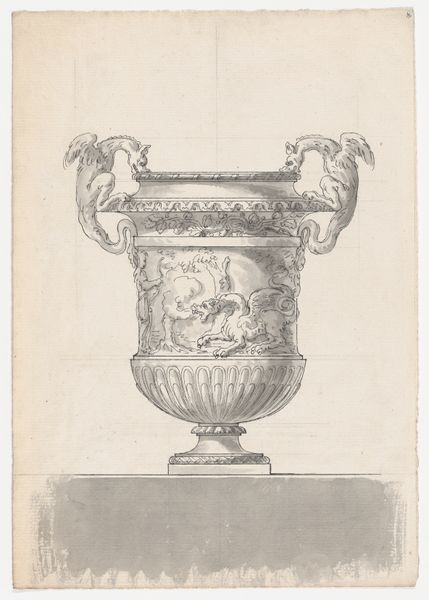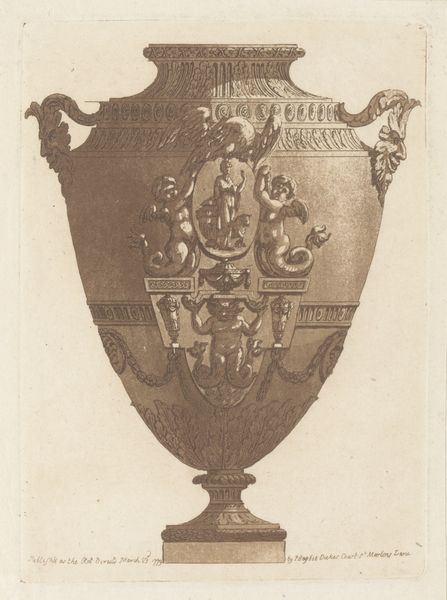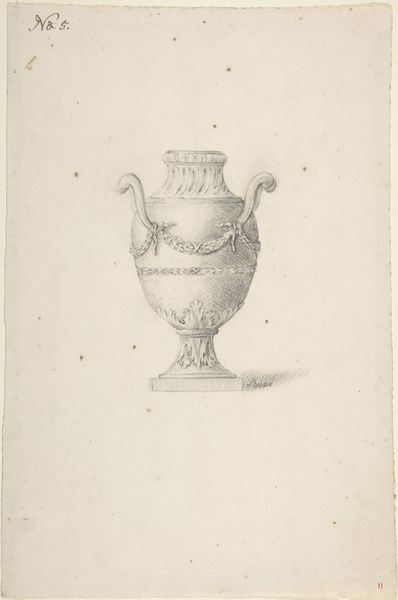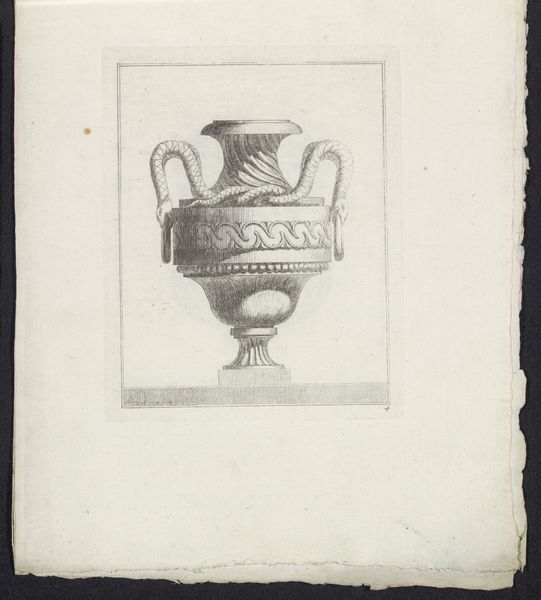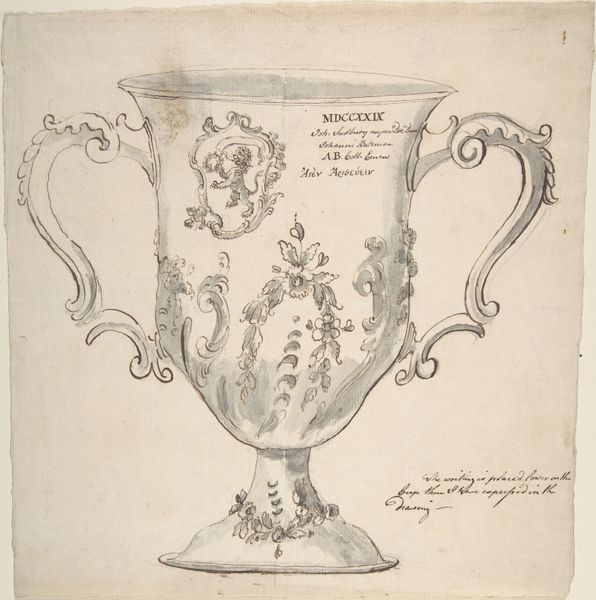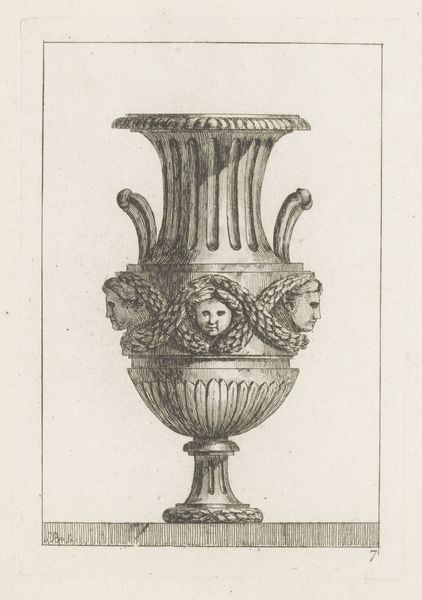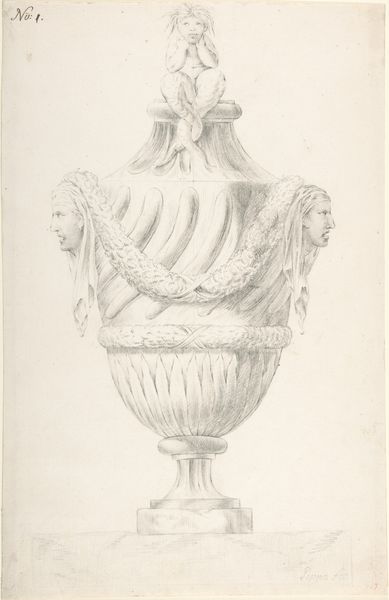
drawing, print, paper, pencil
#
drawing
#
neoclacissism
# print
#
pen sketch
#
pencil sketch
#
paper
#
pencil
Dimensions: Sheet: 4 13/16 x 2 15/16 in. (12.2 x 7.5 cm) Sheet: 5 1/16 x 3 13/16 in. (12.8 x 9.7 cm)
Copyright: Public Domain
Editor: This work, titled "Three Designs for Covered Vases," comes to us from somewhere between 1700 and 1800. It's rendered in pencil, pen, and possibly other print media on paper, by an anonymous hand. I'm really struck by the contrast between the precision of the neoclassical style, and the somewhat hurried, almost sketch-like quality of the drawing. What do you make of that, considering the period? Curator: That tension is exactly where the interest lies. Neoclassicism, as a movement, sought to revive the aesthetics of ancient Greece and Rome, often associated with order, reason, and idealized forms. But these aren't finished presentation drawings for a patron, are they? Editor: They don't seem to be. Curator: Precisely. They are likely studies, explorations of form and ornament. These drawings allow us a glimpse into the creative process itself. The vases, while adhering to the symmetrical forms characteristic of neoclassicism, each exhibit unique decorative elements. Notice how each is slightly different. We have ribbons, foliage, one with flames, one is without a lid even. Think about the role these vases might have played. Where were these meant to go? In a garden, a ballroom, on top of a tomb? The act of design here reflects social aspirations of refinement and culture, yet also reveals an engagement with more individualistic artistic expression, and that's wonderful to consider. Editor: So, it's not just about replicating a classical ideal, but reinterpreting it, playing with it even. It feels like these images have as much to tell us about the culture and expectations of the period, as they do the artistry. Curator: Exactly! These vases become a sort of canvas for understanding the dialogue between tradition and innovation during that period. This teaches us how complex something that at first sight might seem static can actually be full of depth and historical meaning. Editor: I'll definitely be seeing a lot more when I look at similar works moving forward. Thanks for clarifying how to decode the cultural message.
Comments
No comments
Be the first to comment and join the conversation on the ultimate creative platform.

